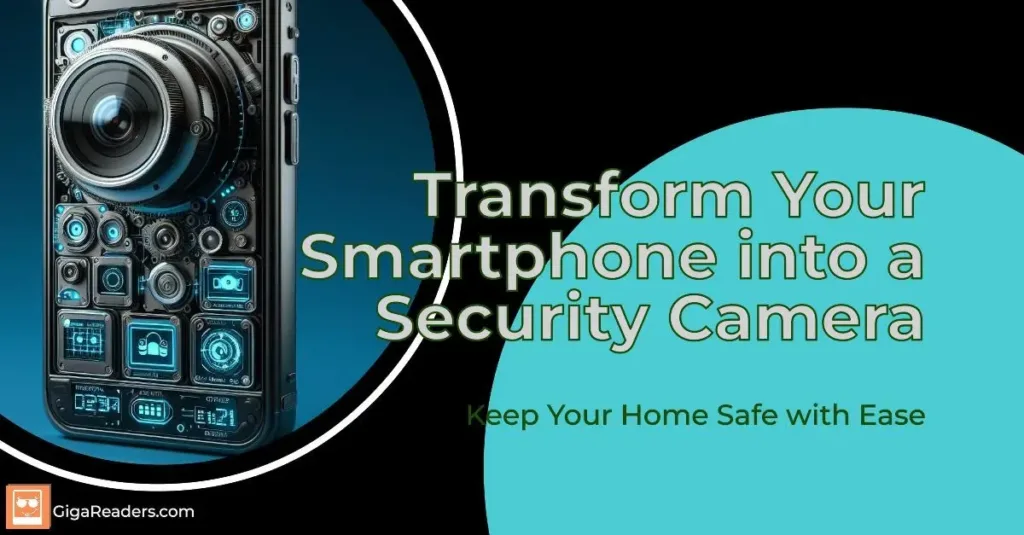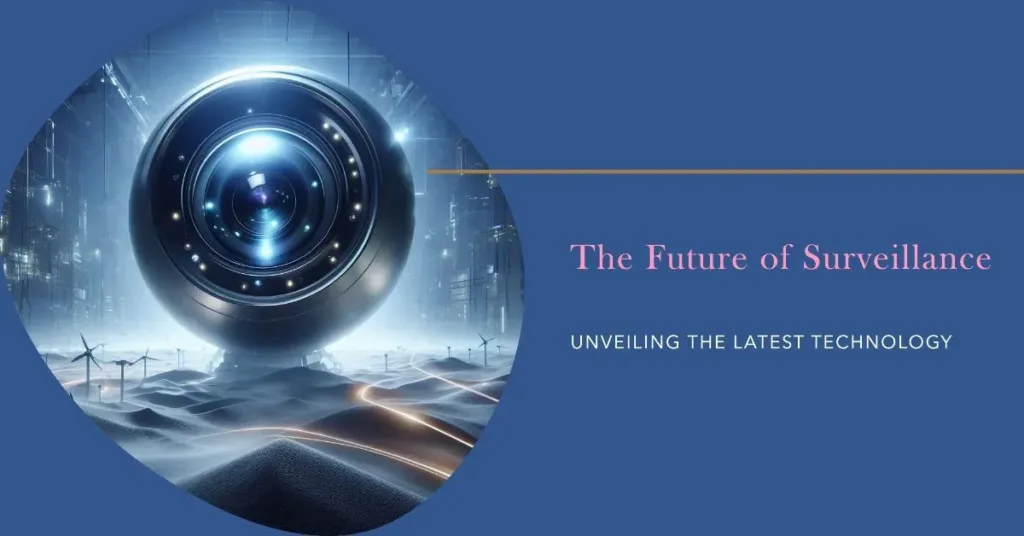Imagine having the ability to watch over your home, no matter where you are. With smart home security cameras, this is not just a fantasy but a reality. These innovative devices offer a comprehensive solution to home security, providing real-time monitoring, remote access, and advanced features that go beyond traditional surveillance systems. In this article, we’ll delve into the world of security cameras, exploring their key features, installation tips, integration with home automation, and future trends.

Table of Contents
- Introduction
- Understanding Smart Home Security Cameras
- What are Smart Home Security Cameras?
- Why are They Important?
- Benefits of Intelligent Surveillance
- Types of Security Cameras
- Indoor vs. Outdoor Cameras
- Wired vs. Wireless Cameras
- Specialty Cameras
- Key Features and Technologies
- Motion Detection and Alerts
- Night Vision and Low-Light Performance
- Advanced Technologies
- Installation and Setup Guide
- Planning Camera Placement
- Installing and Configuring Cameras
- Troubleshooting and Support
- Remote Monitoring and Control
- Smartphone Apps and Web Portals
- Real-Time Alerts and Notifications
- Managing Multiple Cameras
- Integrating Cameras with Smart Home Automation
- Compatibility and Interoperability
- Automation Scenarios
- Integration Tips and Best Practices
- Best Practices for Smart Home Security
- Strong Passwords and Authentication
- Firmware and Software Updates
- Regular Maintenance and Monitoring
- Future Trends in Smart Home Security Cameras
- Emerging Technologies
- Integration with Smart Cities and IoT Ecosystems
- Consumer Adoption and Market Trends
- Case Studies and Real-Life Examples
- Residential Case Studies
- Commercial and Community Use Cases
- Conclusion and Recap
- FAQs
Introduction
In today’s digital age, ensuring the safety and security of our homes has become a top priority. With the rise of smart home technology, homeowners now have access to intelligent surveillance solutions that offer unparalleled peace of mind. These cameras, also known as intelligent home surveillance systems, provide advanced features and functionalities that go beyond traditional security measures.
Understanding Smart Home Security Cameras
What are Smart Home Security Cameras?
Smart home security cameras are cutting-edge devices equipped with advanced technology such as motion detection, night vision, and two-way audio capabilities. These cameras can be connected to a home network, allowing homeowners to monitor their property remotely via smartphones or computers.
Why are They Important?
In an era where security threats are increasingly prevalent, security cameras play a crucial role in safeguarding homes and deterring potential intruders. With real-time monitoring and alerts, homeowners can take proactive measures to protect their property and loved ones.
Benefits of Intelligent Surveillance
- Enhanced security: Intelligent Home Surveillance provide round-the-clock surveillance, ensuring that any suspicious activity is detected and recorded.
- Remote access: With remote monitoring capabilities, homeowners can keep an eye on their property from anywhere in the world, providing peace of mind while traveling or at work.
- Integration with smart home systems: security cameras can be seamlessly integrated with other smart devices such as lights, locks, and alarms, allowing for automated security routines.
Types of Smart Home Security Cameras
Indoor vs. Outdoor Cameras
Indoor cameras are designed for use inside the home and are typically smaller and more discreet. Outdoor cameras, on the other hand, are built to withstand the elements and provide surveillance coverage for the exterior of the property.
Wired vs. Wireless Cameras
Wired cameras require a physical connection to a power source and the home network, providing a reliable and stable connection. Wireless cameras, on the other hand, are easier to install and offer more flexibility in terms of placement but may be susceptible to interference.
Specialty Cameras
Specialty cameras, such as PTZ (pan-tilt-zoom) and floodlight cameras, offer additional features and functionalities to suit specific surveillance needs. PTZ cameras can be remotely controlled to adjust the viewing angle, while floodlight cameras provide both surveillance and outdoor lighting.
Key Features and Technologies
Motion Detection and Alerts
These cameras are equipped with motion sensors that detect movement within their field of view. When motion is detected, the camera sends alerts to the homeowner’s smartphone or computer, allowing them to take immediate action.
Night Vision and Low-Light Performance
Many of them are equipped with infrared LEDs that enable them to capture clear footage even in low-light or nighttime conditions. This ensures that homeowners have visibility around the clock, regardless of lighting conditions.
Advanced Technologies
Advanced technologies such as artificial intelligence (AI) and facial recognition are increasingly being integrated into Intelligent Home Surveillance cameras. These technologies enhance the camera’s capabilities, allowing for more accurate detection of intruders and other security threats.
Installation and Setup Guide
Planning Camera Placement
Before installing cameras, it’s essential to carefully plan their placement to ensure optimal coverage of the property. Consider factors such as entry points, blind spots, and areas of high activity.
Installing and Configuring Cameras
Installation of smart home security cameras typically involves mounting the cameras in the desired locations and connecting them to the home network. Once installed, homeowners can configure the cameras’ settings and preferences using the accompanying mobile app or web portal.
Troubleshooting and Support
In the event of installation or connectivity issues, homeowners can refer to the camera’s user manual or online support resources for troubleshooting guidance. Many manufacturers also offer customer support services to assist with setup and troubleshooting.
Remote Monitoring and Control
Smartphone Apps and Web Portals
Security cameras typically come with companion smartphone apps or web portals that allow homeowners to access live feeds, view recorded footage, and adjust camera settings remotely. These intuitive interfaces make it easy for users to monitor their property from anywhere with an internet connection.
Real-Time Alerts and Notifications
One of the key benefits of Intelligent Home Surveillance cameras is their ability to send real-time alerts and notifications to the homeowner’s smartphone or other connected devices. These alerts can be customized based on user preferences, such as motion detection alerts or tamper detection alerts.
Managing Multiple Cameras
For homeowners with multiple cameras installed, managing and monitoring all cameras from a single interface is essential. Many camera systems offer features for organizing and grouping cameras, making it easy to navigate and monitor multiple feeds simultaneously.
Integrating Cameras with Smart Home Automation
Compatibility and Interoperability
When choosing cameras, compatibility with existing smart home automation systems is a crucial consideration. Ensuring that cameras are compatible with popular platforms like Amazon Alexa or Google Assistant allows for seamless integration and automation.
Automation Scenarios
Integrating security cameras with other smart devices opens up a world of automation possibilities. For example, cameras can be set to trigger lights or sirens in the event of motion detection, or to lock doors when no motion is detected for a specified period.
Integration Tips and Best Practices
To maximize the benefits of integration, homeowners should follow best practices for setting up and configuring automated routines. This may include creating logical triggers and actions, testing automation sequences, and regularly reviewing and updating settings as needed.
Best Practices for Smart Home Security
Strong Passwords and Authentication
Securing security cameras starts with strong passwords and authentication methods. Homeowners should use unique, complex passwords for each device and enable two-factor authentication whenever possible to add an extra layer of security.
Firmware and Software Updates
Regularly updating camera firmware and software is essential for keeping devices secure and up to date with the latest features and security patches. Homeowners should regularly check for updates and apply them promptly to minimize the risk of vulnerabilities.
Regular Maintenance and Monitoring
In addition to software updates, regular maintenance and monitoring of smart home security cameras are essential for optimal performance. This may include cleaning camera lenses, checking for obstructions, and reviewing footage for any signs of suspicious activity.
Future Trends in Smart Home Security Cameras
Emerging Technologies
The future of security cameras is bright, with emerging technologies such as 4K resolution, edge computing, and AI-driven analytics poised to revolutionize the industry. These advancements will enable cameras to provide even greater detail and intelligence for enhanced security.
Integration with Smart Cities and IoT Ecosystems
As smart home technology continues to evolve, cameras will increasingly become part of broader IoT ecosystems and smart city initiatives. This integration will facilitate data sharing and collaboration between devices and systems for more comprehensive security solutions.
Consumer Adoption and Market Trends
Consumer adoption of security cameras is on the rise, driven by growing awareness of home security threats and the increasing affordability and accessibility of smart home technology. As demand continues to grow, the market for smart home security cameras is expected to expand, leading to further innovation and competition in the industry.
Case Studies and Real-Life Examples
Residential Case Studies
In residential settings, Intelligent Home Surveillance cameras have proven invaluable for deterring burglaries, monitoring children and pets, and providing peace of mind while away from home. Real-life examples showcase how cameras have helped homeowners identify intruders, monitor deliveries, and even capture memorable moments.
Commercial and Community Use Cases
Intelligent Home Surveillance cameras are not just for residential use; they also have applications in commercial settings and community surveillance programs. From monitoring retail stores and office buildings to enhancing public safety in parks and neighborhoods, smart cameras are playing an increasingly important role in security and surveillance.
Conclusion and Recap
In conclusion, smart home security cameras offer a powerful solution for protecting homes and loved ones. With advanced features, remote monitoring capabilities, and integration with smart home automation systems, these devices provide homeowners with unparalleled peace of mind and security. As technology continues to evolve, the future of smart home security cameras looks brighter than ever, promising even greater innovation and effectiveness in safeguarding our homes.
FAQs
- Are smart home security cameras difficult to install?
- While installation requirements may vary depending on the camera model and type, many smart home security cameras are designed for easy DIY installation, with step-by-step guides and intuitive setup processes.
- Can smart home security cameras be hacked?
- Like any internet-connected device, smart home security cameras are susceptible to hacking if not properly secured. To minimize the risk of unauthorized access, homeowners should follow best practices such as using strong passwords and regularly updating firmware.
- Do smart home security cameras require a subscription?
- Some smart home security cameras offer optional cloud storage subscriptions for accessing recorded footage and advanced features. However, many cameras also offer free basic cloud storage or local storage options for storing footage without a subscription.
- Can smart home security cameras work without an internet connection?
- While smart home security cameras typically require an internet connection for remote monitoring and access to advanced features, some cameras may still function for basic recording and monitoring functions without internet access.
- Are smart home security cameras compatible with smart home platforms like Amazon Alexa or Google Assistant?
- Many smart home security cameras are compatible with popular smart home platforms, allowing for seamless integration and voice control capabilities. Homeowners should check compatibility requirements and compatibility lists provided by the camera manufacturer.


